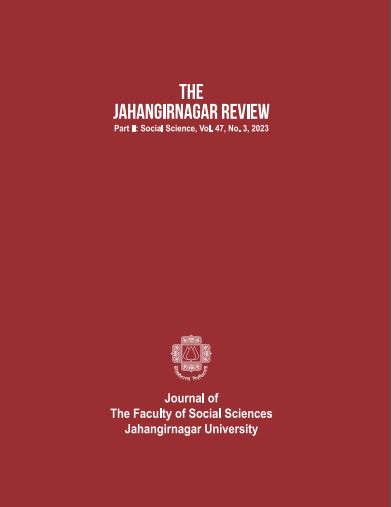Peasant Rationality in Decision Making
Main Article Content
Abstract
Peasants, a social group, are always part of a larger economic system (Wolf: 1966). Peasant populations occupy the margins of the modern world economy, with one foot on the market and the other in subsistence. (Bock 1969, Redfield 1957) They are neither fully integrated into that economy nor wholly insulated from its pressures. They are rarely prosperous, often precarious, and contain among them some of the poorest people in the world (Elli: 1988, 1993, Shanin 1971, Raper 1968, Redfield 1957). A market where peasants participate in opportunities on the one hand, and pressure the other for themselves. So, the relationship between peasants and the preservation of a non-market basis for survival. The peasant unit of production is both a family and an enterprise; it simultaneously engages in both consumption and production. This dual economic character of the peasant household preoccupies some logic or rationality which helps them in decision-making for further production, consumption, exchanges, etc. (Tivy 1994, Wallace 1984, Schendel 1981, Misra & Dung 1994) In Bangladesh, two-thirds of rural income comes from agricultural and non-agro projects which are generally centered towards agro-based crops (BBS 1994). The households take non-agro occupation as supplementary to agriculture. Bangladesh possesses a different agro-climatic and social structure. Poverty in Bangladesh is closely linked with the growth of inequality in command over natural resources (Hussain 1988, Khan 1982, Jansen 1993). Many contemporary landless workers were formerly tenants or small farmers. There is a very unfavorable average land endowment (only 0.3 acres of cultivable land per rural person). Bangladesh with a total land of 144000 sq. km (approximately) had 100.6 million population in 1985, i.e., 1062 people per sq. km of cultivable land which is the highest level of population density in the world. The rate of population growth is 2.3 (per thousand). If this will continue, in 2000 the total population will be 150-155 million. In that time Bangladesh will be overloaded by people and people only. In 2021, the total population exceeded 165 million who share the same amount of land even after thirty-five years.
Regarding the possibility of getting data, the respondents were categorized into two groups. Out of 292 households of this village, 50 have been selected as primary sources of data. The heads of the households were interviewed. The secondary sources of data were the other household heads, their family members, and different groups of people at different times. Vital help was taken from the teachers and employees of Hazipur primary school and various documents of the union parishad office, educational, statistical, and agricultural development office, etc. A household survey of the whole village according to the questionnaire includes all of the relevant issues of peasant rationality and general information. Survey activities were followed by interviews and discussion. Open- ended and close-ended interviews and discussions with selected 50 peasant household heads have been completed. Observation method has taken for new data, rationalize the collected data, to understand the acceptability and dependency of collected data. Few Cases have been studied intensively to assuring and practical perception of their responses.

